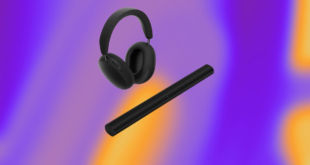Astronomers at the European Southern Observatory, an intergovernmental research organization located in Chile, started working on a comprehensive map of the Milky Way years ago. The goal was simple: create the most detailed and accurate map of the Milky Way ever. After 13 years of taking images of the night sky, the team has now published the map — and it’s absolutely massive.
The team started making the map in 2010 and finished taking images for it in 2023. Over that 13-year span, astronomers took over 200,000 images across 420 nights to map as much of the Milky Way as they could. Once stitched together, the map is 500 TB large and houses 1.5 billion objects, from dense clusters of old stars to relative newborns, which are generally more difficult to see because they are often surrounded by dust and other space debris.
“We made so many discoveries, we have changed the view of our Galaxy forever,” said Dante Minniti, an astrophysicist at Universidad Andrés Bello in Chile who led the project.
To achieve this level of clarity and detail, astronomers used the ESO’s VISTA telescope located in the Paranal Observatory in Chile. Specifically, the group used the VISTA’s VIRCAM, a high-resolution infrared camera that can see stars and other celestial bodies despite the veil of dust and gases that make observing such things difficult. VIRCAM can also spot very cold objects, such as free-floating planets that don’t orbit a star, or brown dwarfs, which are stars that failed to achieve sustained nuclear fusion.
The ESO posted a video on YouTube eight years ago that shows how much more clarity and detail the VIRCAM can get compared to a visible-light image and how many more stars and objects can be seen that way.
How much of the Milky Way does the map show?
The section of the Milky Way mapped by the VISTA project.
The map is too large and too detailed to post. But you can view the map in its entirety on ESO’s website. Zoom in on nearly any segment of the map to see dozens or even hundreds of stars in various clusters and formations. Despite the huge amount of data, though, the map doesn’t cover the entire Milky Way galaxy.
The Milky Way is estimated to have anywhere from 100 to 400 billion stars and likely as many planets. At 1.5 billion objects, the map only represents a small slice of the galaxy. Its claim to fame is that it’s the largest such map ever made and it’s the most detailed. Other surveys exist that have cataloged billions of objects as well, so overall, humans have still mapped only a small sliver of the night sky.
 meganwoolsey Home
meganwoolsey Home



